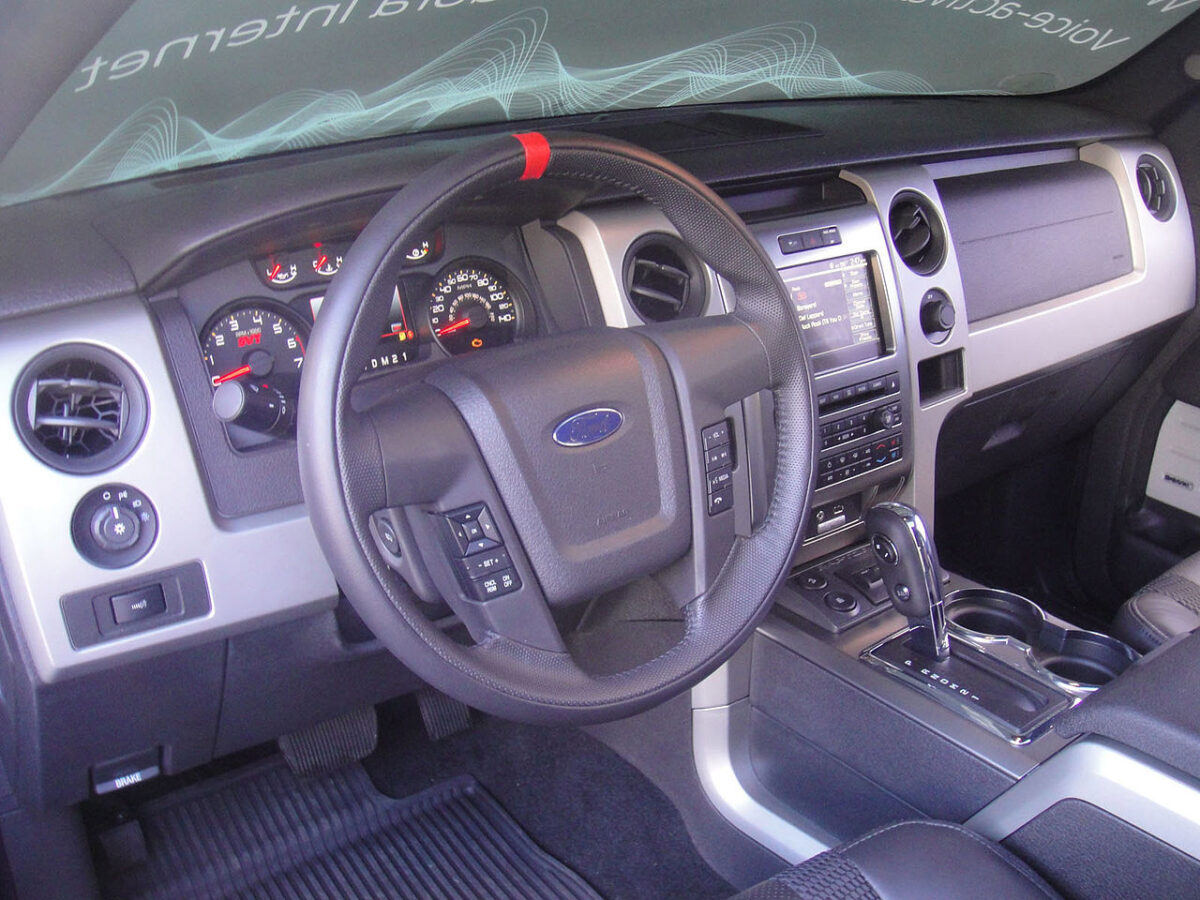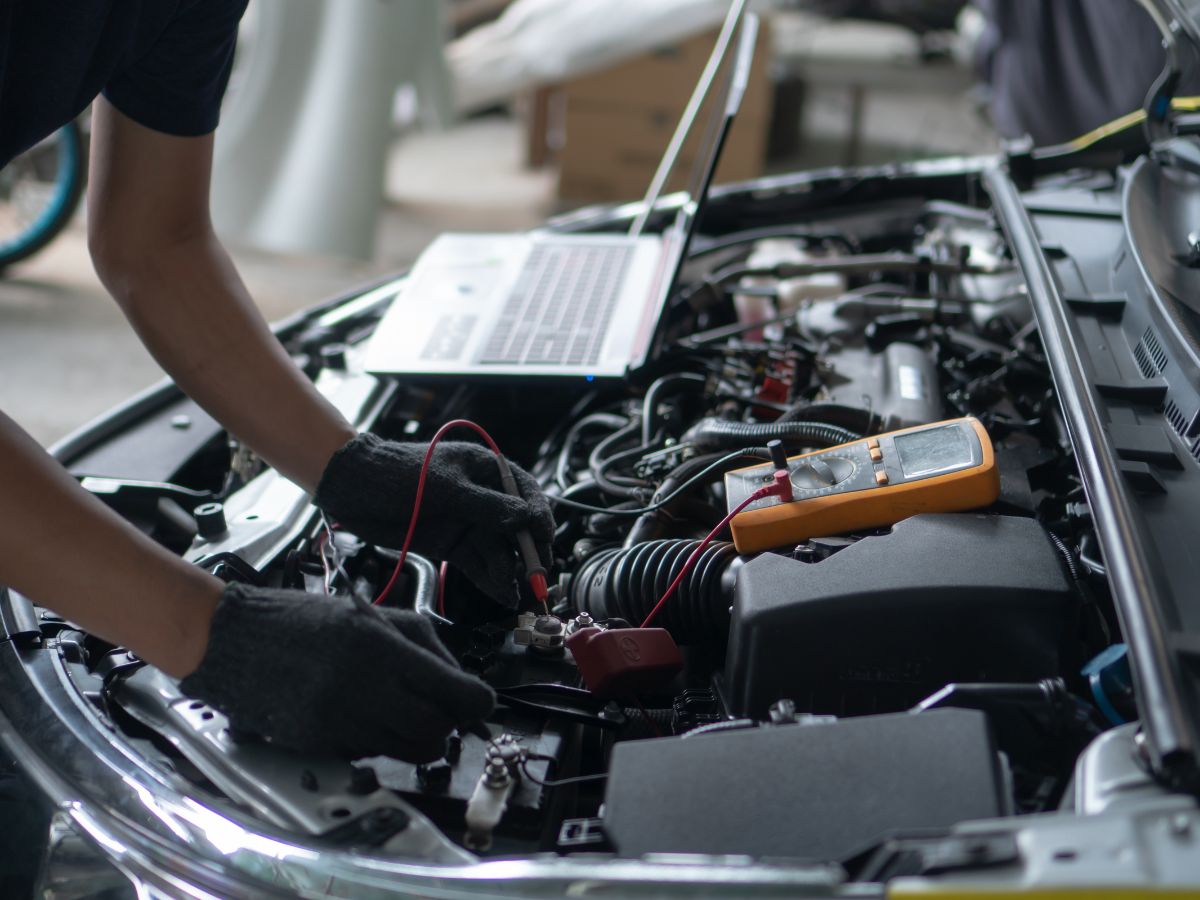In This Article Show
One of the most popular trucks in the world and arguably one of Ford’s best-selling cars, The Ford F150, as with any vehicle ever produced, has its fair share of problems even, ranging from issues like Ford F150 turning over but won’t start. One that seems to perplex many Ford F150 owners is a persistently blinking theft light that prevents the vehicle from starting.
This light is part of your vehicle’s Passive Anti-Theft System (PATS), a sophisticated system designed to deter theft.
When functioning correctly, your invisible ally works silently to keep your Ford F150 secure. However, when it starts acting up, it can leave you stranded, scratching your head, wondering why your trusty truck refuses to roar to life.
In this comprehensive guide, we’ll delve into the causes of the blinking theft light issue, how to diagnose it, and, importantly, how to fix it. Let’s start by understanding your Ford F150’s anti-theft system.

Understanding the Ford F150 Anti-Theft System
If you’ve owned a Ford F150 for a while, you’re likely aware of its advanced security features: the PATS, or Passive Anti-Theft System. This system is a silent guardian that plays a crucial role in protecting your vehicle from potential thieves.
The PATS is an electronic security device fitted to Ford vehicles, including the F150. It works in tandem with your vehicle’s engine control unit (ECU) to enable or disable your vehicle’s engine based on the status of the ignition key.
When you insert a key into the ignition and turn it, the PATS reads the unique code embedded in the key. If this code matches the one stored in the ECU, the system disarms, allowing the vehicle to start. If not, the PATS activates a theft light on your dashboard, which begins to blink rapidly, and the engine remains immobilized.
This guide’s blinking theft light issue indicates a miscommunication or error within this anti-theft system. However, fret not. Over my 15 years in the field, I’ve seen and resolved this problem numerous times, and I’m here to help you understand and fix it, too.
The Ford F150’s anti-theft system is intricate but intelligently designed. Knowledge of its workings is the first step in solving our blinking theft light issue.

Causes of the Ford F150 Theft Light Blinking Issue
Understanding the underlying causes of the blinking theft light is crucial to resolving the issue. It’s like a detective story; we need to identify the culprit before bringing them to justice.
In our case, the “culprit” is the issue causing the blinking theft light in your Ford F150. Here are some of the most common causes:
1. Key Fob Issues
The key fob contains a chip with a unique code that the PATS recognizes. If the key fob is damaged, malfunctioning, or the chip inside is somehow compromised, the PATS might fail to recognize the key, causing the theft light to blink.
2. Damaged Ignition Components
The PATS communicates with several components in the ignition system. If any of these components, like the ignition cylinder or the transceiver, are damaged, the system might not be able to read the key’s code properly.
3. PATS System Error
Sometimes, the issue lies within the PATS system itself. This could be due to a software glitch or a hardware failure within the system.
4. Electrical System Problems
Your vehicle’s electrical system plays a crucial role in the functioning of the PATS. If there’s an issue with the electrical system, such as a weak battery or faulty wiring, it could affect the PATS, causing the theft light to blink.
Over my career, I’ve seen each of these issues causing the Ford F150’s theft light to blink and prevent the vehicle from starting. But don’t worry. In most cases, these problems are solvable.

Diagnosing the Issue
Before we can fix the blinking theft light issue in your Ford F150, we need to identify the exact cause. Proper diagnosis is key; it’s akin to a doctor understanding an ailment before prescribing medication. Here are steps to help pinpoint the problem:
- Check the Key Fob: Start by examining your key fob. Look for any obvious signs of damage. If you have a spare key, try starting your vehicle with it. If the theft light doesn’t blink with the spare key, the issue is likely with your primary key fob.
- Inspect the Ignition Components: If the key fob isn’t the problem, turn your attention to the ignition system. Check for any signs of wear or damage. Remember, the ignition cylinder and transceiver are critical in communicating with the PATS.
- Look for PATS System Error: If you’re technically inclined, you might want to check the PATS system for error codes using an OBD-II scanner. This device can read fault codes from the ECU, which might provide clues to the problem.
- Evaluate the Electrical System: Finally, check your vehicle’s battery and look for any signs of loose or damaged wiring. Electrical system problems can interfere with the PATS, causing the theft light to blink.
Diagnosing the exact cause of the issue can be tricky, especially if you’re unfamiliar with automotive systems. This is where professional help can come in handy.
Possible Fixes for the Ford F150 Theft Light Blinking Issue
Now that we’ve identified potential causes of the theft light blinking, let’s dive into the solutions.
1. Fixing Key Fob Issues
You might need to replace your key fob if the problem lies with it. If you have a spare key and it works, use it until you can get a replacement for the problematic key. Remember, your key fob needs to be programmed to match your vehicle’s code, which is a task best left to professionals.
2. Addressing Damaged Ignition Components
Damage to the ignition cylinder or the transceiver must be addressed by replacing the faulty components. This can be tricky if you’re unfamiliar with automotive mechanics, so getting a professional to do it is recommended.
3. Correcting PATS System Error
If an OBD-II scanner has indicated an error within the PATS system, you might need a software update or a hardware replacement. A professional mechanic knowledgeable about Ford’s anti-theft system will be best equipped to handle this.
4. Solving Electrical System Problems
If the problem is due to a weak battery, replacing it should solve the issue. For wiring issues, the damaged wires need to be repaired or replaced. A professional should carry out electrical system work to avoid any potential safety risks.
With that out of the way, you should know, each vehicle is unique, and your Ford F150 is no exception. What works for one vehicle might not work for another, even if the symptoms seem identical.
Preventive Measures
Regular checks and servicing can help you avoid a lot of potential problems, including the blinking theft light in your Ford F150. Here are some preventive measures to consider:
- Regularly Check the Key Fob: Keep an eye on the condition of your key fob. Make sure it’s not damaged, and the battery is always in good shape. Having a spare key can also be a lifesaver in case your primary key fails.
- Service Ignition Components: Regularly servicing the ignition components can help you spot signs of wear or damage early. This can prevent them from causing problems with the PATS.
- Update Your Vehicle’s Software: Ensure that your vehicle’s software, including the PATS, is up-to-date. Software glitches can cause the theft light to blink; regular updates can fix these issues.
- Maintain the Electrical System: Regularly inspect your vehicle’s battery and wiring. Any issues with the electrical system can affect the PATS, so it’s essential to keep everything in working order.
Regular vehicle maintenance is a small investment of time and money that can prevent larger issues down the line. It’s a philosophy that’s served me well in my career, and I believe it will serve you well, too.
To wrap it up, while the blinking theft light in your Ford F150 can be a source of stress, remember that most issues can be resolved with a bit of knowledge and the right approach. I hope this guide has helped you understand this common problem and provided you with practical solutions.
If you’re stuck anywhere, please leave a comment below, we may be able to work through this issue together.










